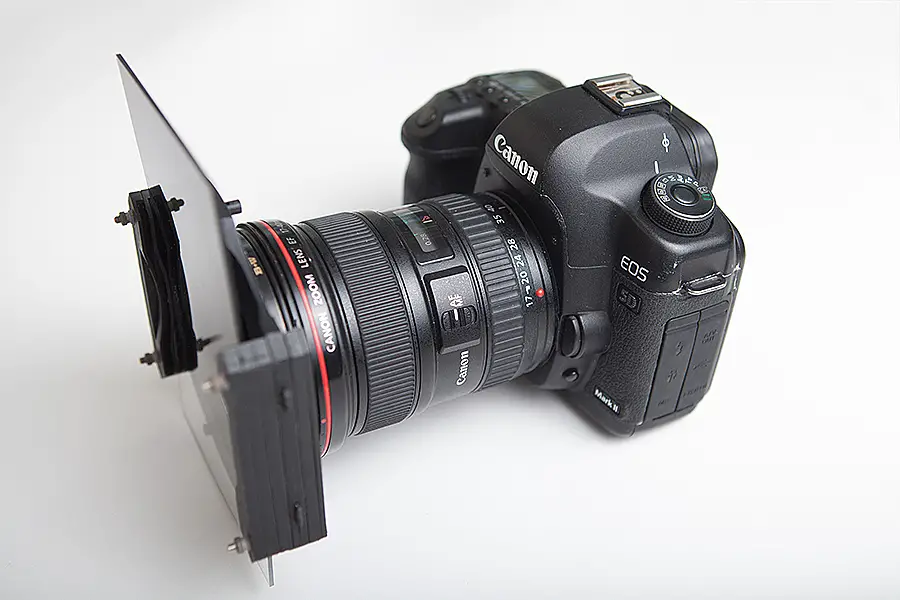
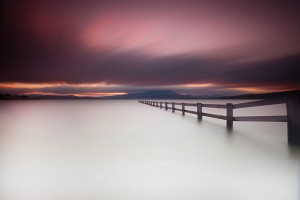
Neutral density filters are a favourite tool of my photography tool set and admittedly most of my shots have been taken using at least one. I must be honest, neutral density filters were the turning point for my photography. I actually found it quite frustrating as I wasn’t getting the images how I wanted them in camera until I started playing around with graduated neutral density filters. Once I got hooked on these I started taking other aspects of my photography more seriously, learning about composition and how exposure affects your image. This lead me on a path of exploring the use of neutral density filters from graduated types, strong neutral density filters and even playing around with welding glass.
For this reason I wanted to put together a simple guide on how to use ND filters, explaining the different types out there and why they are a great to have in your camera bag while also looking at when they are needed/are good and how they are generally used by photographers. But neutral density filters do have their shortcomings which I’ll also explore in this article. You never know perhaps you might get hooked on them too? 😉
What are Neutral Density Filters
Before we get started though let’s look at what a neutral density filter is and what purpose it actually serves. A neutral density filter reduces the amount of light coming in to your camera. This is great for photographers who want a longer exposure time or a larger aperture which may not be possible due to lighting conditions at the scene. The light entering the camera is reduced by the darkness of the filter used. When we look at different neutral density filters we look at how many stops of light they block out. By this it means how many f-stops the filter blocks. In English the higher amount of F-stops the neutral density filter blocks out, the darker the filter will be and the longer the exposure time required to get the correct exposure time. Simple enough right?
Neutral density filters come in all shapes and sizes from screw on types (more common) to rectangle glass which is mounted to the camera lens through an adapter. Below shows my setup which I normally shoot with which consists of a .9 Cokin Z-Pro graduated neutral density filter, filter holder, lens adapter to fold the filter holder and a B+W 110 10 stop neutral density filter. Good fun screwing it all on when shooting in freezing conditions 😉
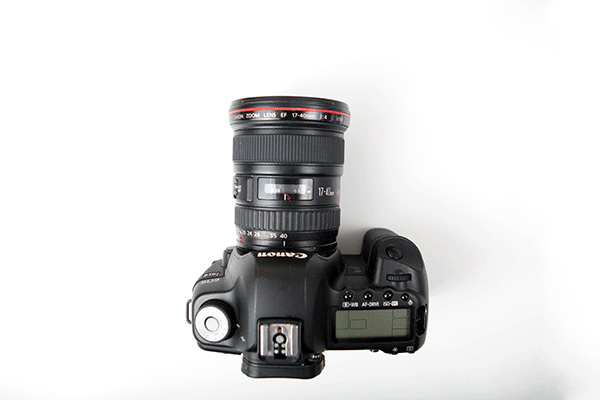
Solid Neutral Density Filters
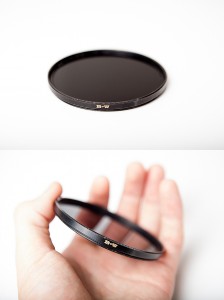
Sold neutral density filters are your more common neutral density filter on the market. These come in various strength levels ranging from blocking out 2 stops of light up incrementally up to filters that block 10 stops of light. The 2 stop filter is quite useful for shooting waterfalls when you’re not quite getting the exposure time you need or when shooting portraits in harsh sunlight and you wish to capture at a higher aperture which may not be possible due to the harsh light. While the 10 stop neutral density filter is a lot more specialised and will allow you to capture exposure times beyond a minute which can drastically transform a scene. If this is something that interests you, give my article about capturing daytime long exposures a read which goes into more detail about the use of strong neutral density filters.
If you’re looking to get started with a solid neutral density filter I would personally recommend a 4 stop neutral density filter like this Hoya filter as this is a good middle ground without being too weak or too strong.
One word of advice though, avoid screw on graduated neutral density filters and screw on filters that allow you to change the strength of the neutral density filter. A few friends have purchased these and have had awful results from them and said how inconsistent they are. Perhaps others have had good experiences with them but from most people I’ve spoken to, they regret the purchase and ended up purchasing either a proper solid neutral density filter or a graduated neutral density filter kit.
Graduated Neutral Density Filters
Graduated neutral density filters are where it all started for me when I started experimenting with ND filters. The purpose of a graduated neutral density filter is to gradually darken part of the image depending on the position of the filter. This results in a gradual shift in darkness from solid to clear and allows you to position the filter based on where you want the graduation to occur. A common use for the filter is when capturing landscape photography where shooting a scene that is not evenly lit as the sky will be bright from the sunrise/sunset and the land quite dark. By using the graduated neutral density filter this will allow you to under expose the sky (avoiding highlights and slightly darkening the sky to create some mood) which results in a more even exposure.
Graduated neutral filters come in various graduations or step types. The type I refer to in this article are your typical soft edge graduated neutral density filter where the top half of the filter is a solid dark and gradually loses its darkness to become clear. The setup I use is the Cokin Z-Pro kit which is ok however has issues of a purple colour cast when multiple filters are stacked. For this reason I prefer to recommend the Lee setup which doesn’t have the same colour cast issues which the Cokin setup can be prone to (however easily corrected in post processing). Another style is a hard edge neutral density filter where half the filter is solidly dark and the rest is clear. Another but less popular style is the reverse graduated neutral density filter. This is popular for sunset photographs where the sun is sitting around the horizon. I’ve not used these personally as they’re quite expensive and feel their usage is limited and doesn’t justify the cost (see this Hitech reverse graduated neutral density filter which doesn’t come cheap) but I’m sure are no doubt handy to have in the kit if you can afford one.
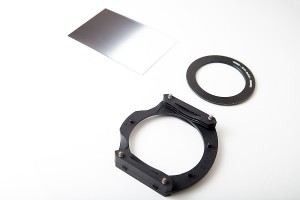
While not limited to various types of graduation, these filters also come in various colours which allow the photographer to add colour to their scene. Generally grey (neutral) filters are what photographers use but others have been known to experiment with the blue, yellow and sepia colour filters. These work just like the normal graduated filters do with the colour being strong at the top and gradually becoming clear at the bottom. I’d recommend against these as they do not provide an accurate colour representation of the screen and if you really must the effect is quite easily achieved in Lightroom using the graduated filter as part of that.
How to use graduated neutral density filters
As technology advances and processing techniques become more defined, some would argue that a graduated neutral density filter isn’t as required as much as it once was and actually create more issues than their worth by degrading image quality and unwanted darkening parts of your scene. I’d argue they still very much have their place in your photography kit but admit they aren’t suitable for every shooting situation.
Generally I will use a graduated neutral density filter to partially darken part of the sky but it can be quite difficult when an object is in part of the sky (i.e. a cliff face that takes part of the sky). For these situations I won’t use my neutral density filter as it will result in the cliff face gradually darkened which looks unnatural and degrades the quality of your final image. Lightroom and other photography editing applications now allow you to overlay a graduated neutral density filter within software and is a great way to experiment with graduated neutral density filters without making the costly outlay of purchasing some.
However I still think that physical graduated neutral density filters do have a place in the photographers kit even with the rise of software programs like Lightroom becoming increasingly capable. This is due to the physical filter darkening the brighter regions of the sky in camera which will result in a longer exposure time. However if you attempt to do the same with a digital graduation filter in post processing this can create noise around the area. One could get around this issue by taking multiple exposures and using layer blending in Photoshop to selectively blend them in. I’ve written about this in a previous blog post which provides more information about layer masking areas from multiple exposures. One might argue that this is the way heading forward for landscape photography as it allows greater control over the final image and avoids any image degradation that may occur from placing a filter in front of the lens. But for the moment I’m happy using my graduated neutral density filters as they work for me.
If you do decide to purchase graduated neutral density filters, I’d strongly recommend the Lee filter setup. I personally shoot with the Cokin Z-Pro graduated neutral density filter kit however they have a slight colour purple colour cast which can result in a hint of purple being added to your image when you use more than one Cokin filter. The Lee filters don’t have this issue and provide a true graduated neutral density filter without any colour cast issues.
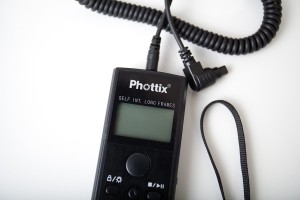
When (and when not) to use neutral density filters
Neutral density filters can be used for many different circumstances which can include:
- Blurring objects of a scene. Some popular things photographers like to blur include capturing the movement of clouds or the smoothing of water. But don’t limit yourself to this. I like to watch a scene and watch for gradual movement that occurs over the space of a few seconds and ponder how it may appear in a long exposure. An example of this is a shot I took at the Huon Valley, Tasmania of a moving jetty to create an interesting effect
- Balancing a bright sky against a dark land/foreground. By using a graduated neutral density filter on the sky, this will allow you to darken the sky to balance it against the dark land
- Adding some mood to the sky can instantly lift your photo in camera without the need for any burning in Photoshop when you return home
- Allowing you to use an aperture that may not be possible due to bright lighting conditions therefore allowing you to capture a shallower depth of field
- Blurring of people in a busy scene like this brilliant photo captured by Tom Carter in Tokyo of a busy intersection
- The list is endless and neutral density filters allow for a lot of creative expression. I’ve compiled a list of long exposure photography ideas in an earlier post which might give you some ideas how you can use ND filters around your area
When to not use neutral density filters
Avoid using neutral density filters when:
- Mountain tops or other objects overlap part of the sky. For this photo taken at Cape Schanck I did not use a graduated neutral density filter as the cliff face took such a major part of the sky. If I was to of used a graduated neutral density filter on the shot I would of lost considerable dynamic range on the cliff and also the shot would of appeared unnatural
- Shooting waterfalls where you can get a long enough exposure without the use of filters. Obtaining the smooth water effect when shooting waterfalls only requires a 2-3 second exposure which is quite easily achievable if shooting in overcast conditions. If you introduce a neutral density filter this will drastically increase your exposure time, getting your silky smooth water effect however will blur the surrounding foliage of the waterfall
Looking at how filters can affect your photo
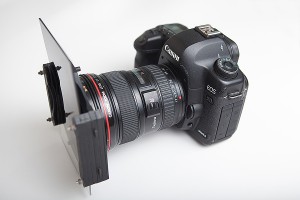
All this talk about solid and graduated neutral density filters is best explained by using some sample photos I took especially for this post to demonstrate how filters come into play. The setup consisted of a Canon 5D Mark II, Canon 17-40, intervalometer, Cokin Z-Pro graduated neutral density filters, 10 stop B+W 110 filter and a tripod (setup shot in case you’re curious).
I’ve not processed the images and for the first 3 images, the exposure time is the same and it is only when the strong 10 stop B+W solid neutral density filter is used that the exposure time changes. This is due to the B+W 10 stop filter being so dark that shooting at the same exposure time as the first 3 images would result in a black image. Instead the camera sensor needs more light to get a proper exposure which is why I had to lengthen how long the shutter remained open (in this case 1 minute).
- Image 1 – Base image where no neutral density filters have been used. As you can see the exposure is quite even however the highlights (white parts of the sky) are starting to blow out (Exposure – 1/4 sec at F18)
- Image 2 – One Cokin Z-Pro .9 graduated neutral density filter has been added. You can notice that it has balanced the exposure of the sky and added some very slight mood to the sky (Exposure – 1/4 sec at F18)
- Image 3 – Two Cokin Z-Pro graduated neutral density filters are used (.6 and .9) which adds a lot more mood to the sky however has introduced darkness over the jetty. This is one downside to using graduated neutral density filters where there is an object overlapping part of the sky (in this case the railings for the jetty) (Exposure – 1/4 sec at F18)
- Image 4 – Going nuts and using the same Cokin setup (one .6 and .9 graduated neutral density filter) and also the solid B+W 110 10 stop neutral density filter. As the 10 stop neutral density filter is being used, this darkens what the camera can see considerably (imagine looking through welding glass) which as a result requires the camera to use a long exposure to capture a correct exposure. I love using the B+W 10 stop filter as it allows you to capture long exposures during the day which blurs the clouds and water however one down side of using so many filters is the colour cast that is introduced. This is mostly from using the Cokin Z-Pro filters which have a purple colour cast to them which you can see in the sky. For this reason I’d strongly recommend the Lee filter kit which doesn’t suffer from the same colour cast issues (Exposure – 1 minute at F18)
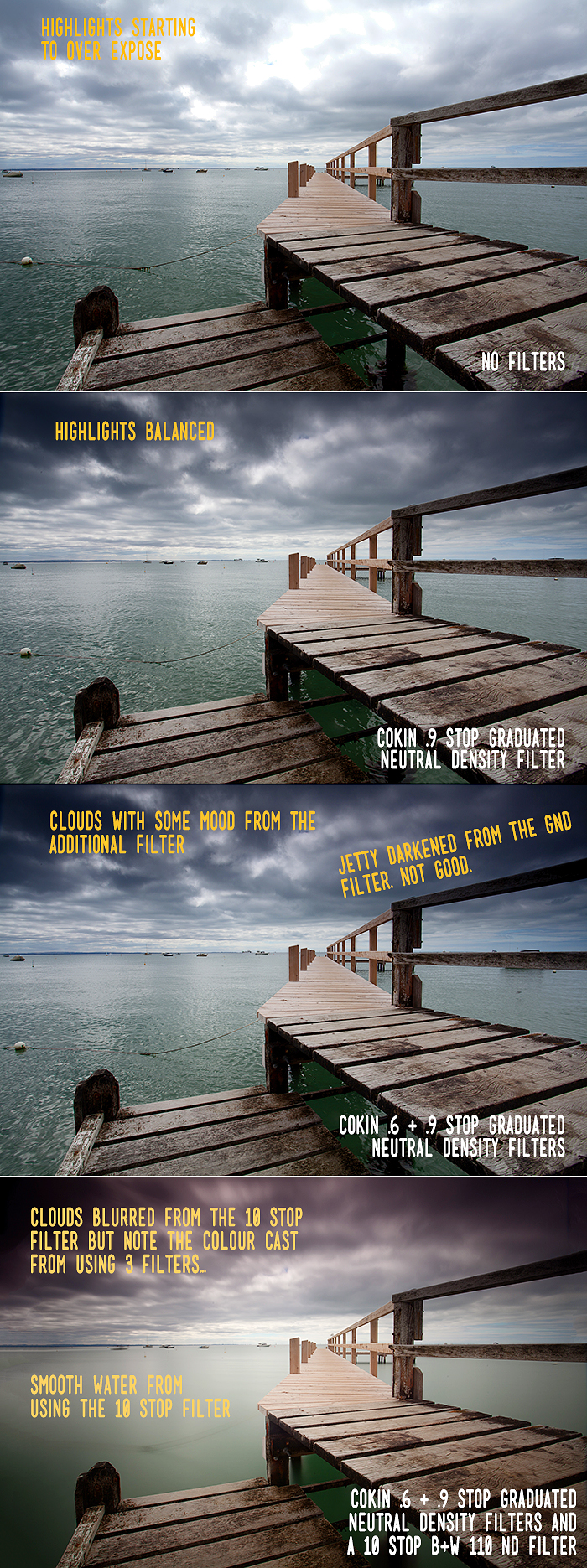
Example photos from using neutral density filters
As mentioned at the start of this post, I won’t deny that I’m a sucker for neutral density filters and use them for a lot of my images. They’re a great tool to have in any landscape photographers tool set and well worth the investment. Below are some images that I’ve taken using a mixture of the Cokin Z-Pro graduated neutral density filters and the B+W 110 10 stop neutral density filter. Now that you’ve read about neutral density filters you should be able to identify where they have been used. In most of the shots a graduated neutral density filter has been used to darken the sky which has brightened the foreground and a stronger solid neutral density filter has been used to blur the movement of the clouds and water.
I hope this guide has been of use to you and has answered any questions you may have had about using neutral density filters. Please feel free to send me an email if you have any further questions as I’m always happy to help or alternatively if you have any feedback on what you would like to read about in future articles I’d also love to hear.
Thanks for reading,
– Alex

Related Reading
- How to photograph waterfalls – This article looks at the basics of waterfall photography by discussing what conditions work best for waterfall photography, how exposure time can affect your photo, what equipment you will need for waterfall photography and more.
- Neutral density reference chart – Stuck on what exposure time to use when using neutral density filters? This printable chart tells you what exposure time you will need based on the filter you are using
- How to capture daytime long exposures – During the day it’s difficult for your camera to take long exposures without the need for filters or very low light conditions. This article explores what equipment you need to get started for shooting long exposures from 30 seconds to 5 minutes during the day.
- Long exposure photography ideas – Stuck on ideas on how to use your ND filters? This article looks at the many uses for ND filters with some long exposure photography ideas to get you started.
- Create your own 10 stop ND filter – A fun little weekend project which shows you how to create your own 10 stop neutral density filter for under $10.
- The magic cloth technique – Use a cloth to create your own graduated neutral density filter during a long exposure.

Great overview of ND filters, and it’s great that you’ve included lots of info about situations when they are suitable, and situations when they are not suitable. Having numerous sample photos in the post also ensures readers can see exactly what you are talking about.
Thanks Martin! Was a spur of the moment thing on Friday so glad it came together okay and made sense. Hope all is well for you.
– Alex
Great post. I had followed one of your earlier posts about making your own ND set-up, and it works just fine (still getting that green tint though, I am using the welders glass).
A lot of useful info in this post Alex, and we certainly don’t stop learning do we.
Thanks,
Mark
Hey Mark!
Thanks a lot for the kind words and coming back for more. I really appreciate it and glad you got something out of the post 🙂
– Alex
When you put a ND filter for a long exposure shot in day light, how do you figure out what is the right time for exposure? What if say at ISO 100, f22 and time of 1 minute, picture still comes underexposed? Do you figure this just by experience or is there a way to calculate the right exposure time? Useful article btw!
Thanks for stopping by Amrit. I’ve actually put together a post in the past which looks at how to calculate exposure times based on the filter in front of the lens – neutral density reference chart.
But mostly, I find the filter actually quite forgiving and over time you will get a feel to what exposure times work at different times of the day (i.e. sunset with diminishing light you will need something around 3-5 minutes mark at an F-stop of around F13~ while during the day you’d dial the F stop up to around 20 and decrease the shutter speed).
Hope that sort of helps and nice wedding photos you have there. Keep up the good work!
– Alex
Thanks Alex. That helped. Though just like you, I guess I would just go by trial and error than bothering to look up at a chart 🙂 hi5 on that! 🙂
Thanks – helpful and constructive articles – well explained.
Thanks Sue! Glad it was beneficial 🙂
Thanks Alex well informative article . Nice to share
Thanks Anuj! 🙂